Heterostructures
It is made of two or more different materials, divided into vertical and transverse heterojunctions, and the lattice mismatch between different materials is required to be 5%.
-
Take GaAs/AlAs as (Lattice constants are similar):
- Import GaAs and AlAs crystal structures from the database respectively: click
File→Load From Online Databasein the menu, select Ga and As elements and clicksearch, select the structure which space group is F-43m then clickload; Open it again, select Al and As elements and clicksearch, select the structure which space group is F-43m then clickload - Build heterostructure: Click
Build→Build Heterostructurein the menu. Add the GaAs and AlAs structures, select the new lattice constant in the detailed settings.
- Import GaAs and AlAs crystal structures from the database respectively: click
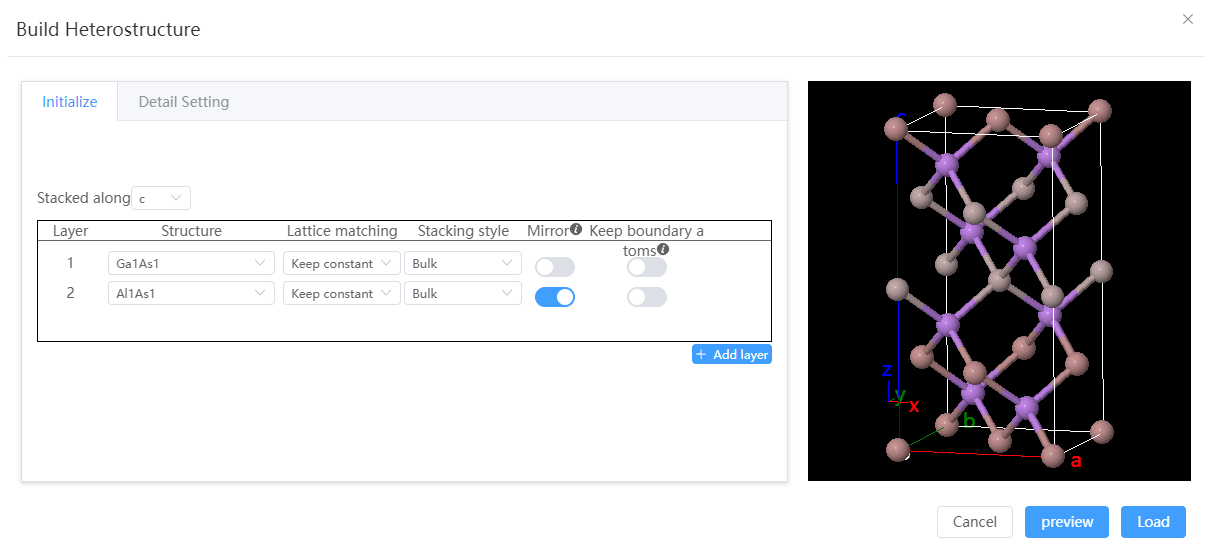 Build heterojunctions Build heterojunctions | 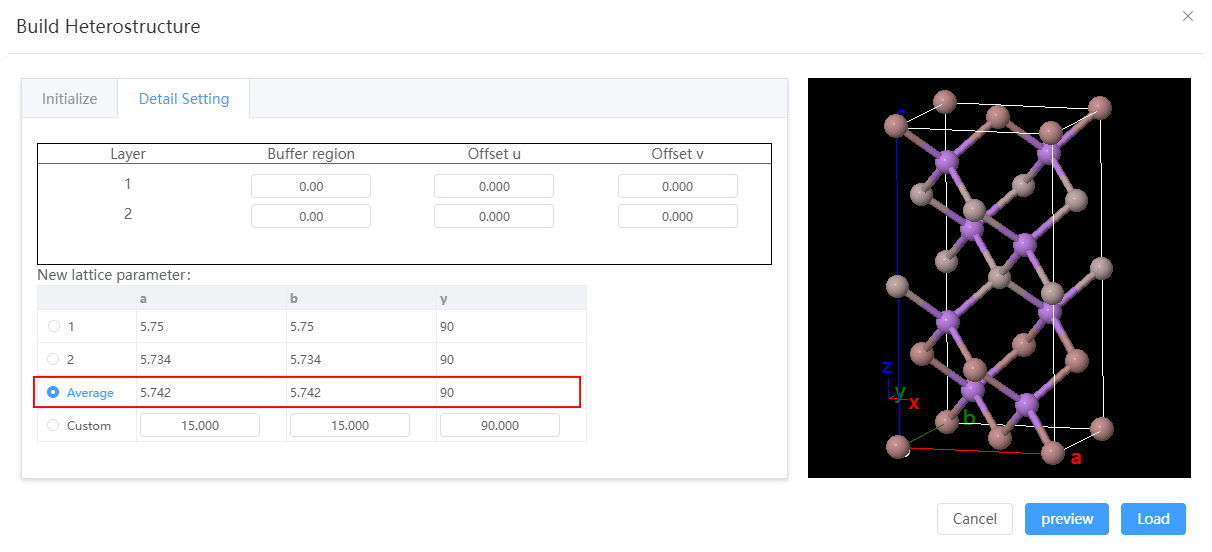 Parameter settings Parameter settings |
-
Take the Fe/TiC colattice interface as an example (Lattice constants differ greatly):
- Import Fe and TiC body material structures from the database respectively: click
File→Load From Online Databasein the menu, select Fe element and clicksearch, select the structure which space group is Im-3m then clickload; Open it again, select Ti and C elements and clicksearch, select the structure which space group is Fm-3m then clickload - Calculate the lattice mismatch: read the lattice constant of the structure separately, in the example, Fe is a=b=c=2.840, TiC is a=b=c=4.336, and the lattice mismatch is (4.336-2.840)/4.336 ≈ 35%;
- Build supercell: Due to the large difference in lattice constants, higher mismatch can be treated by cell expansion to find the smallest common multiple of the lattice constant. Click
Modify→Build Supercell, and set the supercell size in the pop-up window;
supercell size Fe supercell lattice constant TiC supercell lattice constant 1×1×1 2.840 4.336 2×2×2 5.680 8.671 3×3×3 8.520 13.008 4×4×4 11.360 17.344 5×5×5 14.200 21.680 - Calculate the lattice mismatch: the cell expansion found that the lattice constant of 3×3×3 supercells of Fe and 2×2×2 supercells of TiC were similar, and the lattice mismatch was (8.671-8.520)/8.671 ≈ 1.7%;
- Build heterostructure: Click
Build→Build Heterostructurein the menu. Add the Fe and TiC supercell structures, select C for stacking direction, select the new lattice constant in the detailed settings.
- Import Fe and TiC body material structures from the database respectively: click
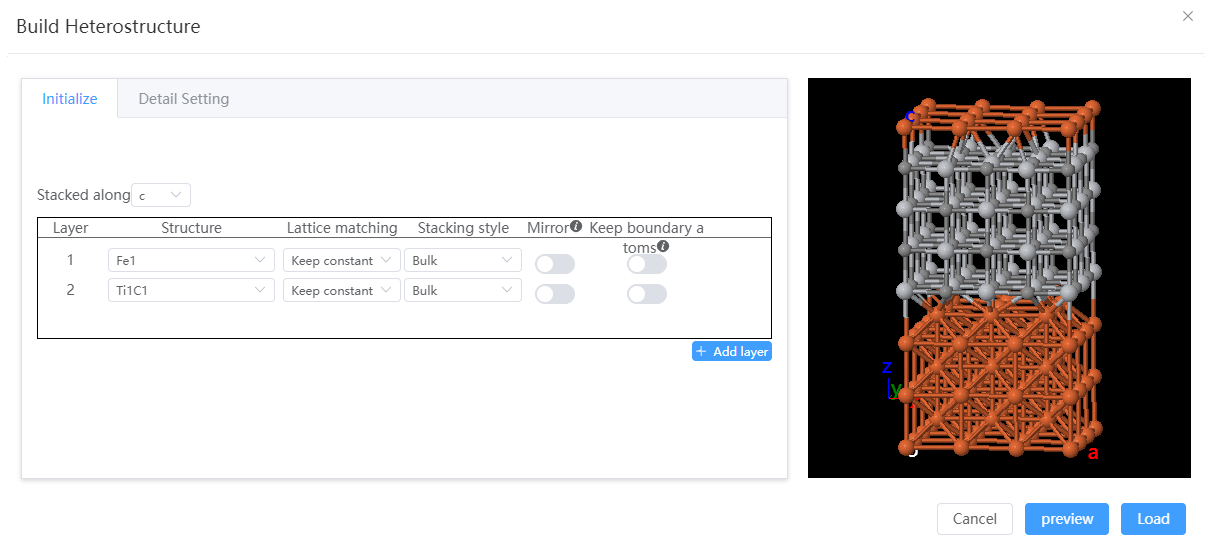 Build heterojunctions Build heterojunctions | 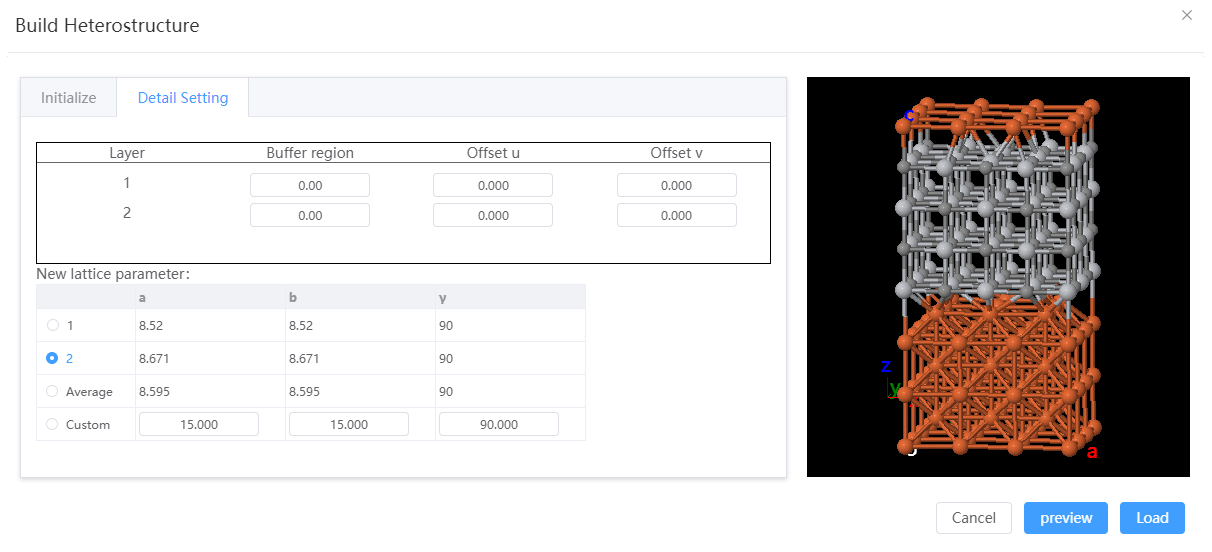 Parameter settings Parameter settings |
-
Take the example of a two-dimensional heterojunction between MoS2/graphene layers (Large difference in lattice constants):
- Import single-layer graphene and MoS2 structures respectively: you can import from the online database, and perform Two-dimensional materials modeling
- Calculate the lattice mismatch: read the lattice constant of the structure separately, in the example, graphene is a=b=2.468, MoS2 is a=b=3.19, and the lattice mismatch is (3.19-2.468)/3.19 ≈ 23%;
- Build supercell: Due to the large difference in lattice constants, higher mismatch can be treated by cell expansion to find the smallest common multiple of the lattice constant. Click
Modify→Build Supercell, and set the supercell size in the pop-up window;
supercell size Graphene supercell lattice constant MoS2 supercell lattice constant 1×1×1 2.468 3.19 2×2×1 4.936 6.38 3×3×1 7.404 9.57 4×4×1 9.872 12.76 5×5×1 12.340 15.95 - Calculate the lattice mismatch: the 4×4×1 supercell of graphene and the 3×3×1 supercell of MoS2 were similar, and the lattice mismatch was (9.872-9.57)/9.872 ≈ 3%;
- Build heterostructure: Click
Build→Build Heterostructurein the menu. Add the graphene and MoS2 monolayer supercell structures, select C for stacking direction, selectKeep thickness constantfor lattice matching method. To separate the layers of the heterostructure from each other, you need to set the buffer thickness in the detailed settings.
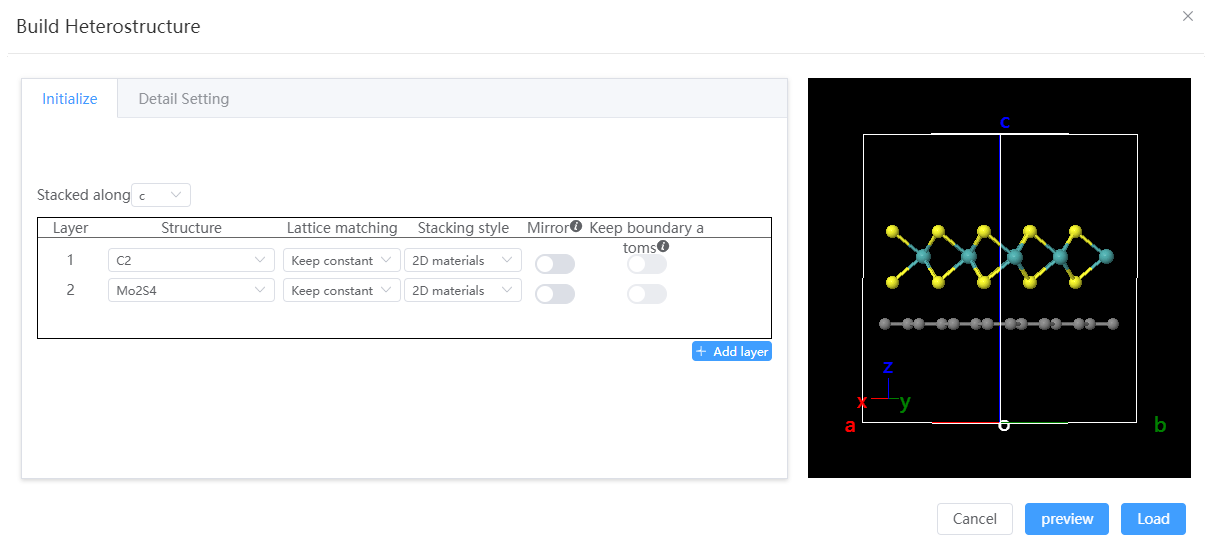 Build heterojunctions Build heterojunctions | 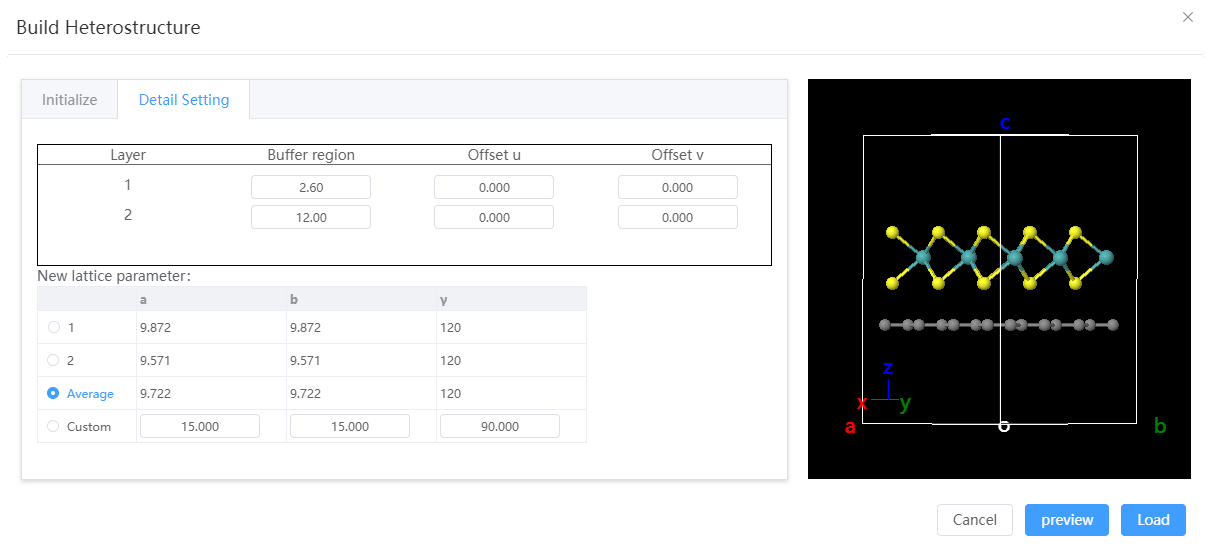 Parameter settings Parameter settings |